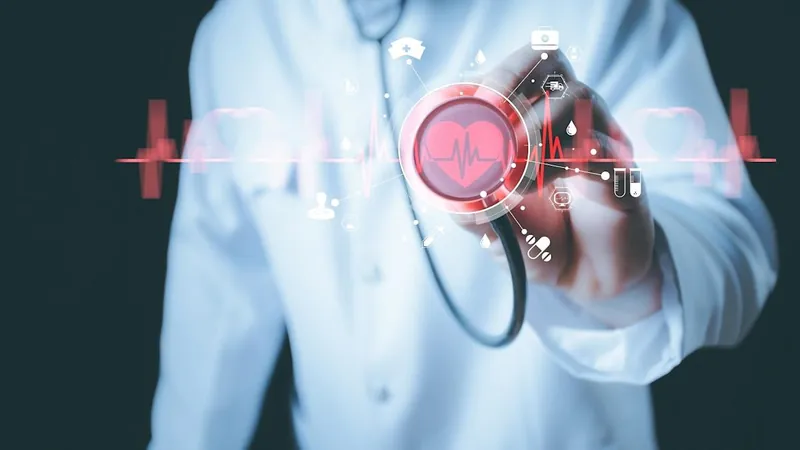
Revolutionary Wearable Device from University of Bath: Your Heart and Lungs, Monitored Around the Clock!
2025-05-19
Author: Wei
A Game-Changer in Health Monitoring
In a groundbreaking achievement, researchers at the University of Bath in the UK have unveiled a cutting-edge wearable device that continuously monitors heart and lung health, offering a revolutionary alternative to traditional CT scans!
How It Works: The Science Behind the Device
This innovative belt-like device is designed to be comfortably worn around the chest, using advanced ultrasound technology to generate real-time images similar to those obtained from a CT scanner. Developed in collaboration with Polish tech firm Netrix, it has the potential to transform the way we conduct patient assessments.
Continuous Monitoring: The Future of Healthcare
Unlike standard CT scans that provide a single, static image, this wearable device offers a dynamic view of the lungs, heart, and other vital organs over an extended period. By enabling continuous monitoring, it alleviates the need for frequent radiology appointments and reduces exposure to harmful ionizing radiation.
Comfort Meets Functionality
Designed with patient comfort in mind, the device features soft materials ideal for long-term wear and utilizes wireless data transmission, seamlessly integrating with hospital systems. Its potential applications go beyond hospital walls, particularly benefiting elderly patients or those living with chronic cardiovascular and respiratory issues.
Cutting Costs and Improving Outcomes
By facilitating early detection, this wearable technology could significantly lower healthcare costs by minimizing unnecessary hospital admissions. Professor Manuch Soleimani, from the University of Bath, emphasized the device's transformative potential: 'This could fundamentally change how we monitor patients in critical care or post-surgical settings.'
Exciting Future Developments Ahead!
As researchers gear up for clinical trials to perfect the device for regulatory clearance, initial testing on healthy male volunteers has concluded, with aspirations to include female participants suffering from conditions such as acute respiratory distress syndrome (ARDS) in future studies. The team also plans to enhance the device with more ultrasound channels for higher image resolution and to adapt it for emergency brain imaging in situations like stroke assessments during ambulance transport.
The Future is Here!
Stay tuned for more updates as the University of Bath takes healthcare technology to new heights!


 Brasil (PT)
Brasil (PT)
 Canada (EN)
Canada (EN)
 Chile (ES)
Chile (ES)
 Česko (CS)
Česko (CS)
 대한민국 (KO)
대한민국 (KO)
 España (ES)
España (ES)
 France (FR)
France (FR)
 Hong Kong (EN)
Hong Kong (EN)
 Italia (IT)
Italia (IT)
 日本 (JA)
日本 (JA)
 Magyarország (HU)
Magyarország (HU)
 Norge (NO)
Norge (NO)
 Polska (PL)
Polska (PL)
 Schweiz (DE)
Schweiz (DE)
 Singapore (EN)
Singapore (EN)
 Sverige (SV)
Sverige (SV)
 Suomi (FI)
Suomi (FI)
 Türkiye (TR)
Türkiye (TR)
 الإمارات العربية المتحدة (AR)
الإمارات العربية المتحدة (AR)